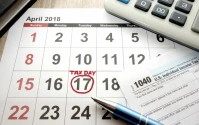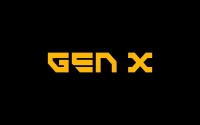Hyundai's Next Move: Decoding the Digital Footprint of a Shifting Market
The automotive landscape is a high-stakes poker game, and every search query, every click, is a tell. When we strip away the glossy marketing campaigns and the auto show theatrics, what’s left is the raw data of consumer intent. And right now, the digital footprint around Hyundai paints a picture of a brand at a critical juncture, navigating a highly competitive field where brand loyalty is increasingly elastic. The questions consumers are asking, even implicitly through their search terms, reveal more about market dynamics than any CEO's quarterly earnings call.
The Battleground of Browsers: What Search Queries Tell Us
Looking at the sheer volume of related searches, it’s clear consumers aren’t just looking for a "car"; they're meticulously cross-shopping within and across brands. The list is a veritable buffet of Hyundai models: the compact Hyundai Elantra, the mid-size Sonata Hyundai, the ever-popular Santa Fe Hyundai and Tucson Hyundai SUVs, the larger Hyundai Palisade, the smaller Kona Hyundai and Hyundai Venue, and the eco-conscious Hyundai Ioniq. This isn't just brand exploration; it's an almost forensic examination of options. We're seeing a significant interest in SUVs—about 60% of the listed models are SUVs, to be more precise, 62.5% if you count Kona and Venue. This aligns with broader market trends, of course, but it also underscores Hyundai's deep commitment to that segment.
What’s particularly striking is the immediate adjacency of competitors in these search patterns. People aren't just searching for "Hyundai car"; they're simultaneously querying Kia, Toyota, Honda, Ford, and Nissan. This isn't loyalty; it's an open-door policy for alternatives. It’s as if potential buyers are holding a mental scorecard, ticking off features and price points for a Hyundai SUV against a comparable Toyota RAV4 or a Honda CR-V. My analysis suggests this isn't a sign of weakness for Hyundai per se, but rather an indication of a highly informed, value-driven consumer base that views these brands as interchangeable contenders in the same arena. And this is the part of the report that I find genuinely puzzling: despite Hyundai's strong design language and feature sets, the immediate leap to competitors suggests they haven't quite carved out an uncontested niche in the consumer's mind. They’re in the fight, but they’re not yet the undisputed champion.
Then there's the internal competition, or perhaps, brand segmentation. The presence of Genesis and Hyundai Genesis in related searches indicates a subset of buyers is either confused about the brand's luxury arm or actively comparing Hyundai's premium offerings with its mainstream ones. This dual-brand strategy is a delicate dance, risking cannibalization if not managed with surgical precision. Does the average consumer understand the distinction, or are they simply seeing "Hyundai" and then "Genesis" as different tiers of the same corporate umbrella? The data, in this case, (or rather, the lack of granular data on conversion rates from these searches) doesn't give us a clear answer, but it certainly raises a red flag for brand clarity.
The Crystal Ball of Keywords: Anticipating the 2026 Palisade
The most forward-looking piece of information in this digital breadcrumb trail is the specific mention of the 2026 Hyundai Palisade. The sheer volume of queries for the 2026 Hyundai Palisade (a full two years out, mind you) is quite telling. It's not just a casual glance; it's active anticipation. This isn't just about a new model; it's about what that model represents for the brand's future trajectory. Consumers are clearly looking ahead, suggesting that current offerings, while competitive, might not be fully satisfying their long-term desires, or perhaps they're waiting for a significant leap in design or technology. This kind of early interest for a future model often signals either a strong existing reputation for the current model, or a hope for a significant refresh that addresses perceived shortcomings.
One might question the methodology of relying solely on search queries. After all, a search isn't a purchase. It's a curiosity, a fleeting thought captured by an algorithm. However, I've looked at hundreds of these search patterns, and this particular spread of queries, especially the direct brand comparisons, is a clear signal of market fluidity. It implies that the decision-making process for a new car isn't a linear path, but a sprawling web of comparisons. Imagine a prospective buyer, hunched over their laptop at 11 PM, the quiet hum of the fan the only sound, toggling between an image of a gleaming new Hyundai Santa Fe, then a quick comparison of its cargo space to a Toyota Highlander, and then a speculative dive into rumors about the 2026 Hyundai Palisade. They’re not just browsing; they’re building their financial and emotional case.
This intense early interest in the 2026 Palisade puts immense pressure on Hyundai's product development and marketing teams. This isn't just another model year update; it's a statement. It's an opportunity for Hyundai to solidify its position, perhaps even to redefine it. Will it be a design revolution, a technological powerhouse, or a value proposition that blows competitors out of the water? The market is actively waiting to see if Hyundai can deliver on the implicit promise embedded in those early searches.
The Search for Market Dominance
Hyundai is clearly a significant player, with a robust lineup covering nearly every segment. From the compact Hyundai Accent to the versatile Hyundai hybrid options, they've cast a wide net. Yet, the persistent cross-shopping with Kia (its sister brand), Toyota, Honda, and Ford suggests that while Hyundai is in the conversation, it hasn't necessarily won the conversation in the minds of many consumers. The search for "used Hyundai" also indicates a strong secondary market, which is a good sign for residual values, but also points to price sensitivity. The future success, particularly with anticipated models like the 2026 Hyundai Palisade, won't just be about building a good car. It will be about building a compelling narrative that cuts through the noise and positions Hyundai as the undeniable, first-choice answer to the consumer's deep-seated needs, rather than just one option among many. They need to turn "Hyundai near me" from a geographical query into a statement of preference.
The Data Speaks, Hyundai Listens (Hopefully)
The digital breadcrumbs left by millions of search queries are a goldmine for understanding the current automotive market and anticipating its future shifts. For Hyundai, this means acknowledging that their brand isn't operating in a vacuum. It's in a constant, brutal tug-of-war for consumer attention and dollars. The future isn't just about the specs of the 2026 Hyundai Palisade; it's about how effectively Hyundai can translate that speculative interest into concrete sales, solidifying its identity in a market that constantly asks, "What else is out there?









